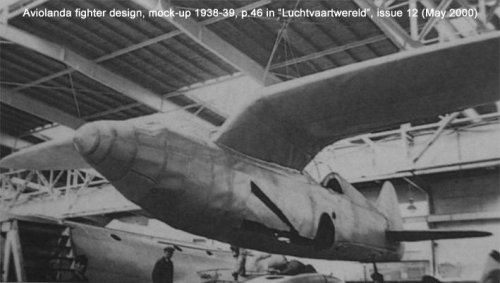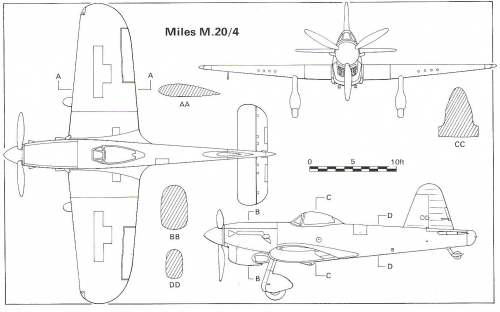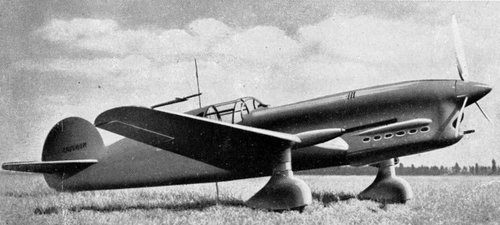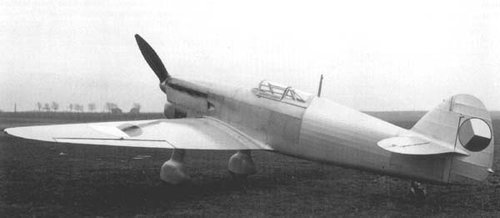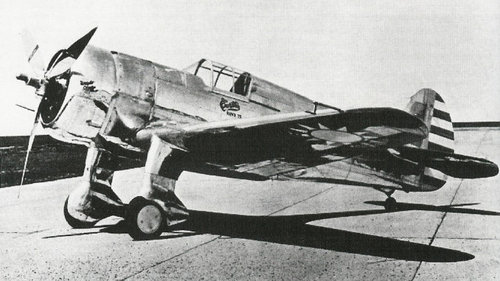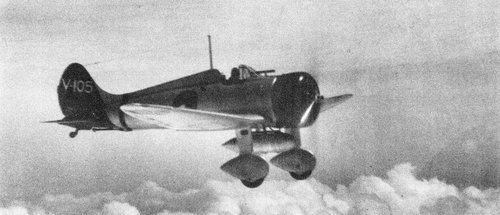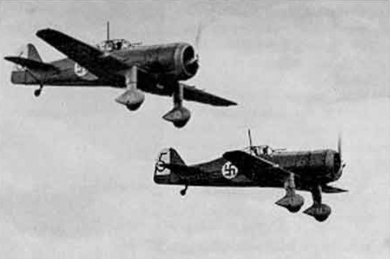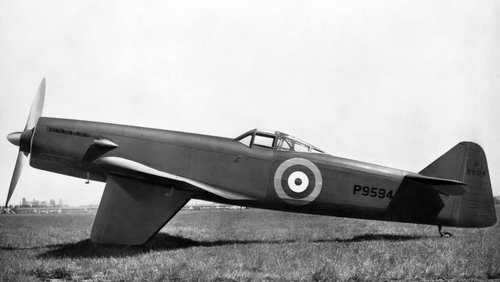The recent thread on a treasure trove of Martin-Baker photos (and the MB 2 in particular) got me thinking about other attempts at simple, fixed-gear fighters. I don't mean holdovers from the interwar years, but new 1939-1945 designs that still used fixed gear. One comes to mind off the top of my head, the Miles M.20 "emergency fighter." The wood-and-fabric M.20 managed to outperform a Hurricane and fall just short of a Spitfire with exact same engine, but with up to 12 .303 Brownings and double the fuel and ammunition load. Two prototypes were built, one for emergency production during the Battle of Britain, which did not prove necessary, and another to an Admiralty specification for a carrier-based fighter that was not accepted as it was easier and cheaper to convert existing Hurricanes and Spitfires.
Miles M.20 (click for Wikipedia article including specs)

Another nice pic here and more info here. In that second one you can easily see the differences between the two prototypes.
Any more nominees for WWII fixed-gear fighter projects?
Miles M.20 (click for Wikipedia article including specs)

Another nice pic here and more info here. In that second one you can easily see the differences between the two prototypes.
Any more nominees for WWII fixed-gear fighter projects?

